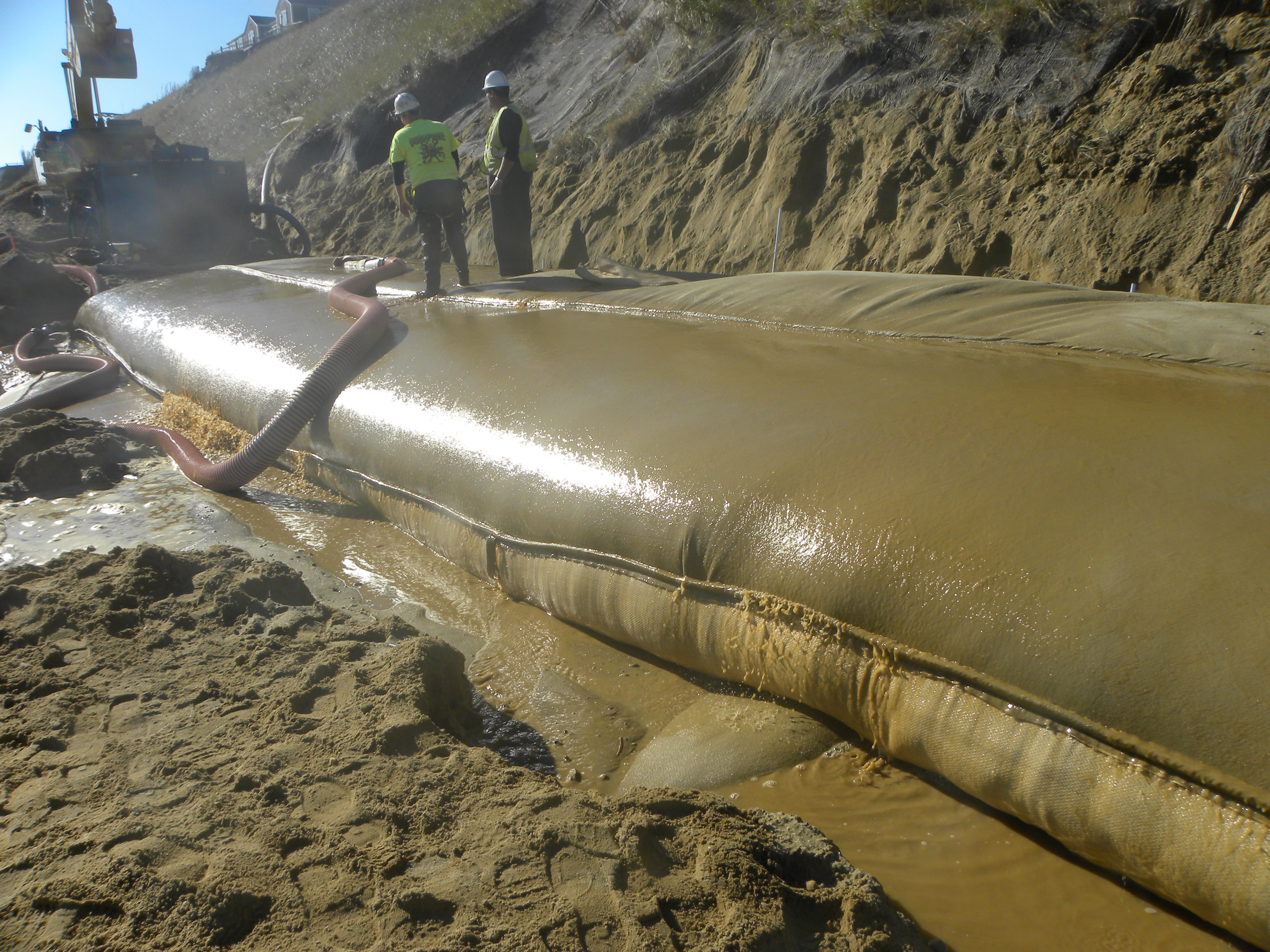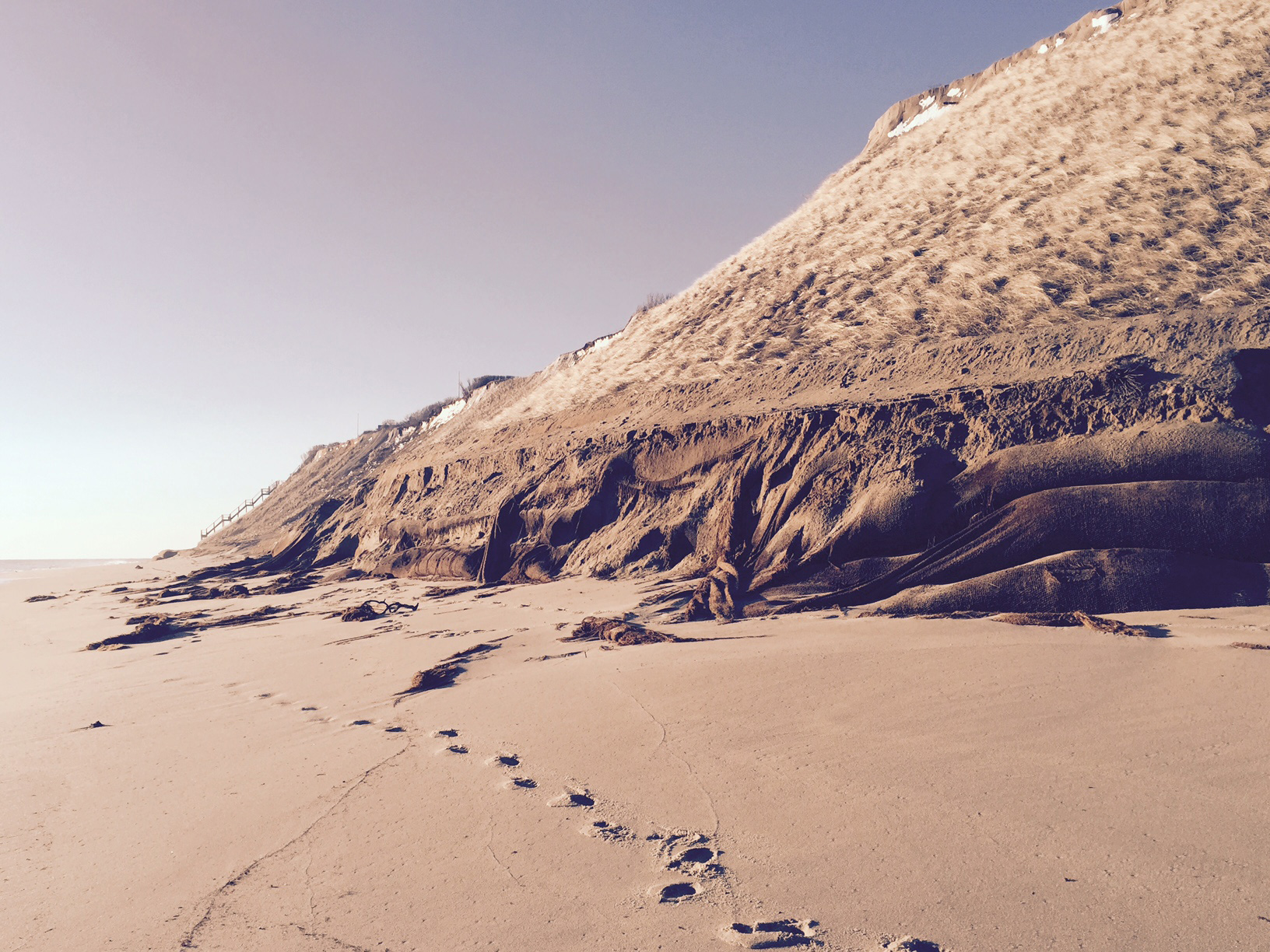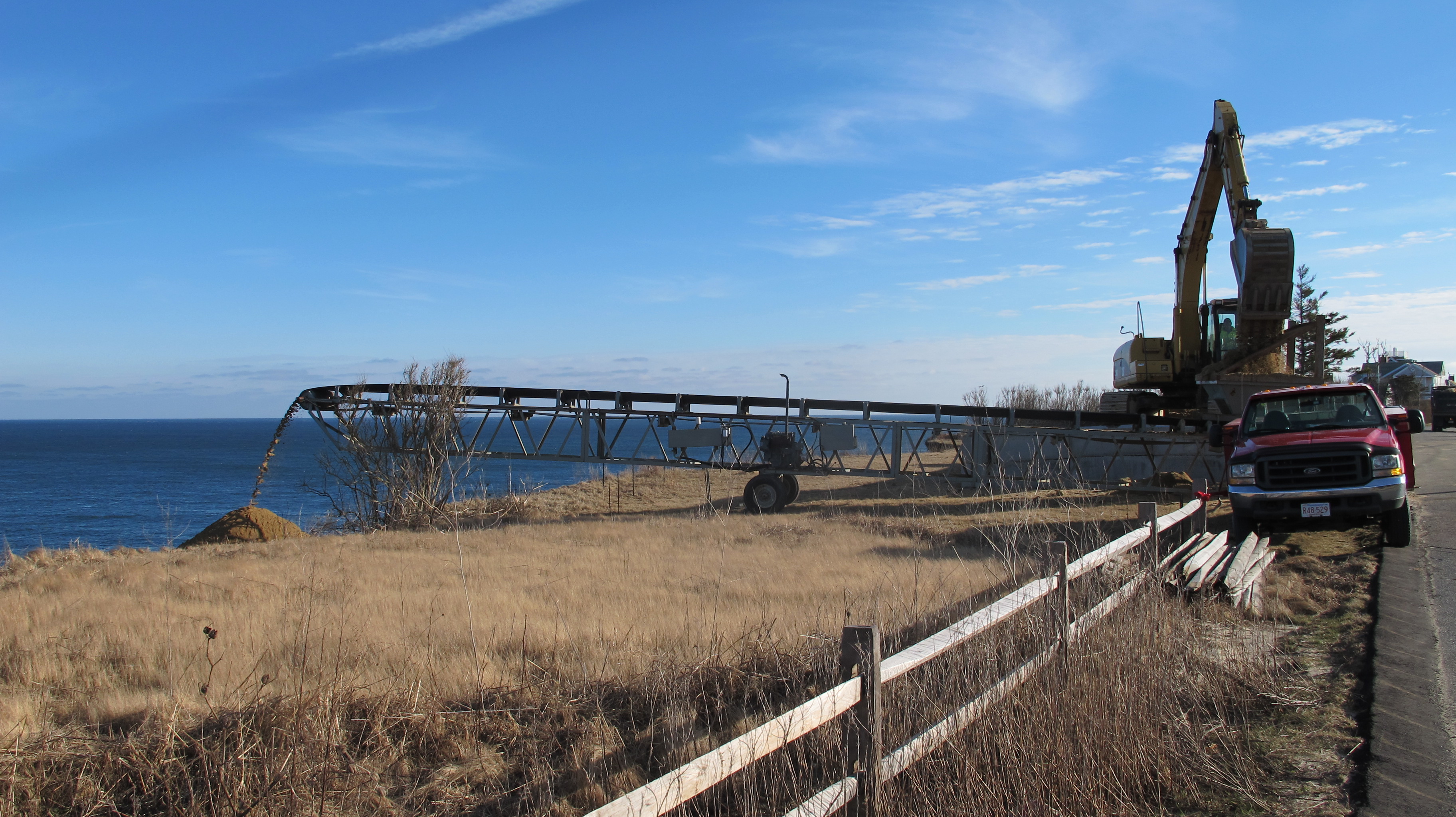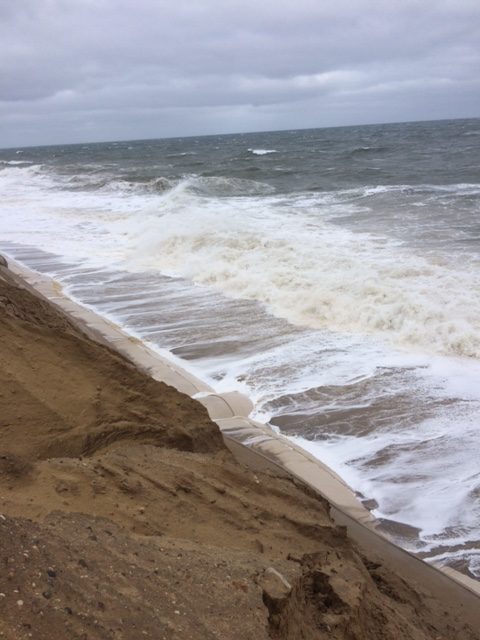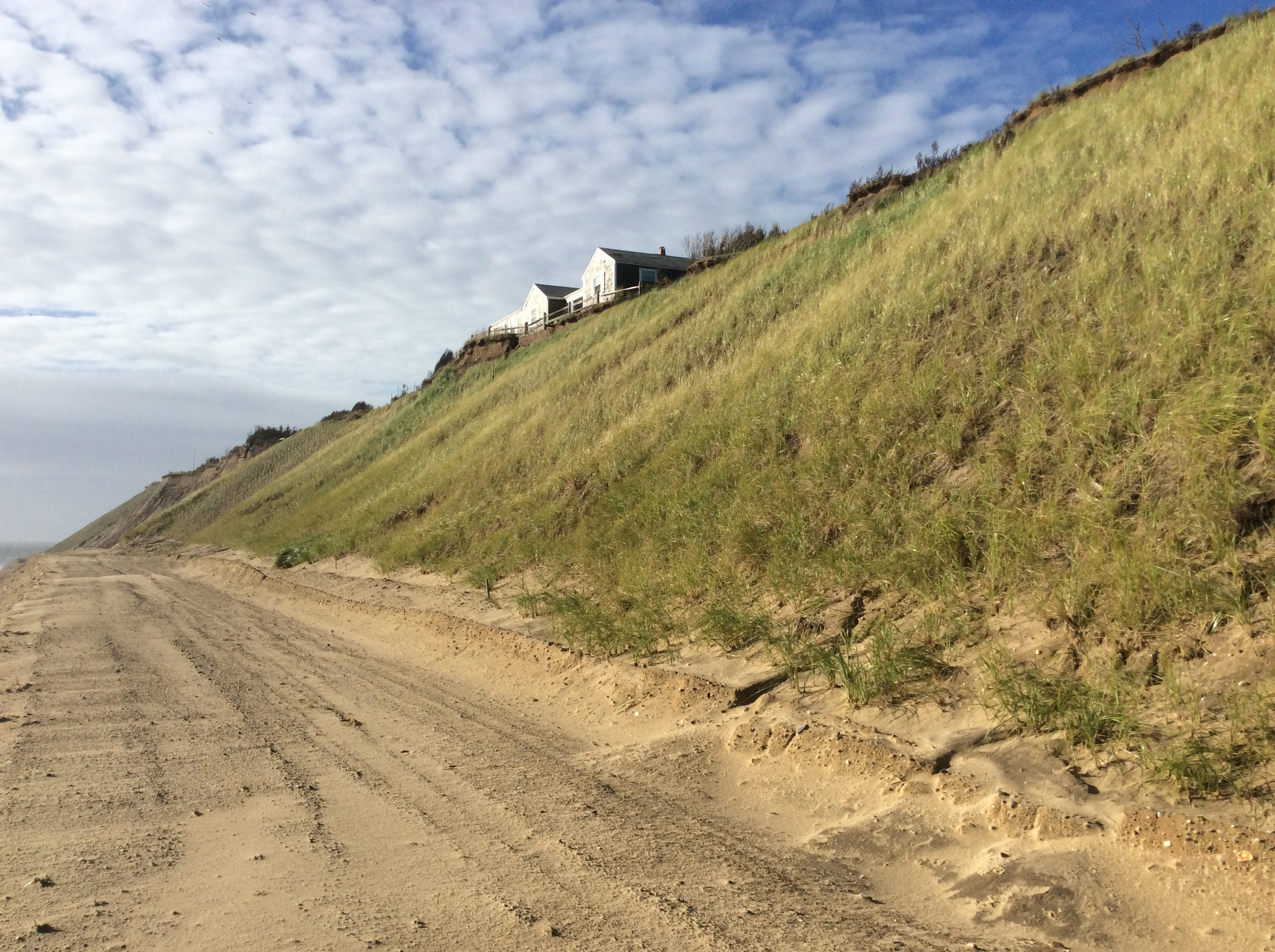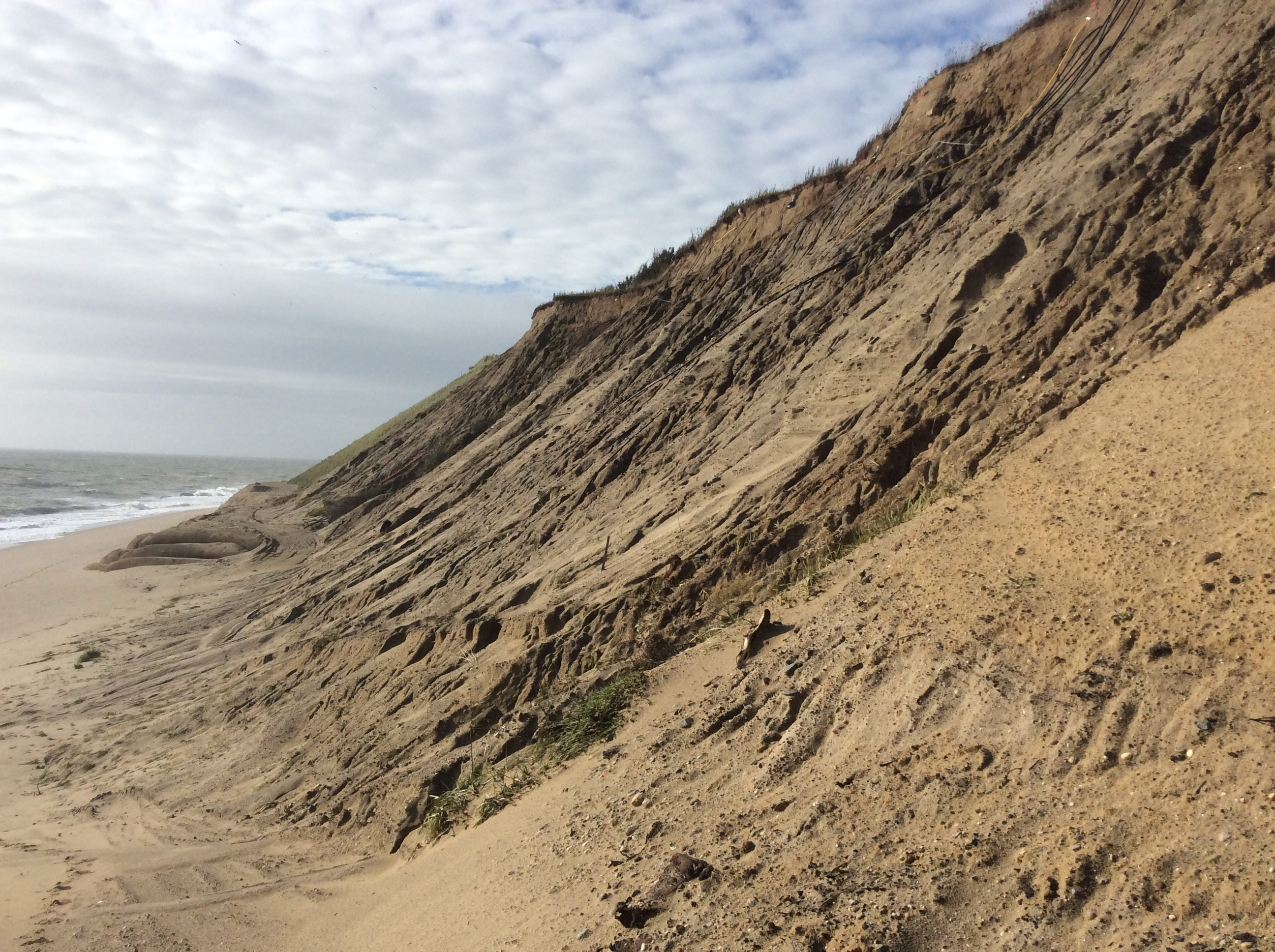More Details on Geotubes
Installation process
The initial installation of the geotube system on ‘Sconset Beach took place during a 35 day period in December 2013 and January 2014. During that time 39,000 cubic yards of sand were delivered to the beach via conveyor belt. A trench about 8 feet deep was dug for the lowest geotube level stretching 900 feet across the length of the back of the beach, near where the bluff begins. The 2nd and 3rd tiers of geotubes were placed on top of the lowest, buried tube. Sand was placed along, behind and on top of the three tiers of tubes. The finished structure (including sand cover) is about 16 feet above the back of the beach. Please see the construction narrative for more information.
Importance of a four-tier geotube system
SBPF is originally requested that the ConCom permanently approve the three tiers of geotubes already in place and allow for the addition of a fourth tier. A fourth tier was approved in fall 2015 and installed in October and November of that year. Experts have indicated that the height of four tiers of geotubes (allowing the top to reach 26 feet on the Mean Low Water datum, which is approximately 16 feet above the base of the bluff, or approximately less than one-fourth the vertical height of the bluff) provides the highest level of protection for the Bluff and Baxter Road.
The geotextile tubes are filled with a “slurry” of sand and water that harden when dry, providing protection at the toe of the Bluff.
Vegetation planting and runoff
To address upper bank erosion SBPF sought and won approval (in early 2015) for plating native vegetation (such as American beachgrass) with strong root systems. This has had an extremely positive impact and is aesthetically pleasing. In early 2016, we were finally granted approval to construct a drainage system on the side of Baxter Road, redirecting surface runoff so it is no longer causing erosion from the top of the bluff.
Assuring beach access
The geotube system and placement was designed to assure that there would be continued beach access. Both sides of the geotube system are graded with a slope of sand so that beach walkers can go up one end and down the other even during a storm event where the tide is up against the sand template.
Challenges of a jute or hybrid geotube system
Recognizing that some community members were interested in a biodegradable (jute/coir) or hybrid (jute/coir and geotextile material) geotube system, we considered that option. Unfortunately, jute/coir had a tendency to rip and failure can be difficult to control. Once the jute/coir rips and sand is lost, the Bluff is left completely vulnerable until the jute/coir can be repaired or rebuilt. Past experience shows that jute/hybrid systems may need to be replaced annually or even more often depending on storms. More recently, a jute/coir system in place on Baxter Road failed during the 2012-2013 winter and could not be rebuilt between quick succession storms, causing the loss of tens of feet of bank.
Using a geotextile material provides greater strength and stability, assuring that the system can withstand a multi-day storm or several quick succession storms. It is also easier to repair, limiting the amount of unnecessary deliveries of additional sand to the beach.
The jute bag installation just south of the geotubes (post storm Jonas) does not hold up during a major storm event.
Sand required to mitigate potential impacts to adjacent beaches
For every linear foot of protected bluff, SBPF is required to provide 22 cubic yards of sand for mitigation. Since the project area is 947 feet long, that is nearly 1,000 dump truck loads worth of sand. During a storm, waves remove the sand covering the front of the geotubes, causing sand from above to slide down and replace the sand that washes away. In this way, the sand removed by the waves mimics the natural course of erosion of the bluff, providing a continued source of sand to the “river of sand” that constantly circulates on our beaches and shoals.
Sand is placed over the bluff to cover the geotube installation.
Maintaining geotubes after major storms
Subsequent to major storms, the geotube system will be carefully inspected to determine if any repairs are required. If needed, most repairs can be accomplished readily, while the tubes remain in place.
During storm Jonas, the waves crash against the geotubes and protect the toe of the Bluff. Some of the sand is washed away as designed and will be replaced by pulling sand down from the template.
Monitoring adjacent beaches
We have committed to monitor beaches twice each year along the expansive section of shoreline from Wauwinet to the north to the Town Sewer Beds to the south. We have monitored these beaches for nearly twenty years and have a significant historical dataset that can be used to evaluate how the geotube system is performing and whether it is impacting adjacent beaches.
Removal Fund
We believe we have a well-designed and well-mitigated project. Nevertheless, we have committed to performing ongoing shoreline surveys that, along with our post-storm reports, can be used to evaluate the project’s performance. If any of the data we collect clearly demonstrates harm to adjacent beaches as a result of the geotube project, or if we fail to honor our sand mitigation and other commitments, we have provided a fully-funded escrow account that can be used to remove the project. We’ve even provided details of exactly how a contractor would remove the project and how much it would cost.


